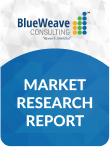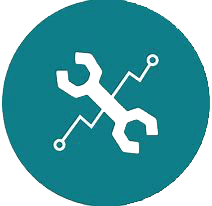United States Health And Medical Insurance Market

United States Health and Medical Insurance Market, By Type of Plan (Private Health Insurance Plan, Government-Sponsored Plan); By Products & Services Offered (Pharmacy Benefit Management, High Deductible Health Plans, Free-for-Service Plans, Managed Care Plans); By Place of Purchase (On Exchange, Off Exchange), Trend Analysis, Competitive Landscape & Forecast, 2019–2031
- Published Date: February 2025
- Report ID: BWC25090
- Available Format: PDF
- Page: 140
Report Overview
The rising healthcare costs, growing geriatric population, and government mandates and regulations are expected to drive United States Health and Medical Insurance Market during the forecast period between 2025 and 2031.United States Health and Medical Insurance Market – Industry Size, Trends & Forecast Report, 2031
United States Health and Medical Insurance Market size was estimated at USD 1.63 trillion in 2024. During the forecast period between 2025 and 2031, United States Health and Medical Insurance Market size is projected to grow at a CAGR of 6.13% reaching a value of USD 2.47 trillion by 2031. Prominent drivers of United States Health and Medical Insurance Market include increasing healthcare costs, evolving coverage options, and rising demand for comprehensive policies post-COVID. The prevalence of chronic diseases, such as diabetes, cancer, and heart conditions, continues to push individuals toward insurance plans to mitigate financial risks. The market operates within a dual framework of private and public coverage, with private insurance dominating at 66.5% and employer-based plans covering 54.4% of the population. Financially, the industry has demonstrated robust growth, with direct written premiums surpassing USD 336 billion and administrative costs rising by 32.6% due to complex regulatory requirements. Digital transformation, telemedicine, and AI-driven solutions are reshaping service delivery, improving operational efficiency, and enhancing patient outcomes. In 2025, wellness programs will play a crucial role in managing healthcare costs, with a stronger focus on preventive care, chronic disease management, and mental health support. Employers are expanding initiatives, such as regular health screenings, fitness programs, and nutrition counseling, to enhance employee well-being. Additionally, the growing adoption of GLP-1 drugs for obesity, diabetes, and heart disease raises concerns over long-term cost implications, driving the need for cost-control strategies and proactive disease management. The industry is also experiencing a shift in behavioral health care, emphasizing accessibility, integration with primary care, and predictive analytics for early intervention. Moreover, generative AI is revolutionizing healthcare by enhancing diagnostic accuracy and improving decision-making. As the market evolves, insurers must navigate regulatory challenges, leverage technological advancements, and develop strategic approaches to ensure accessible and cost-effective healthcare coverage.
Health and Medical Insurance – Overview
Health and medical insurance is a financial safeguard covering medical expenses arising from illness, injury, or preventive care. It helps individuals manage healthcare costs by covering hospitalization, outpatient treatments, prescription drugs, and specialized care. In United States, coverage includes private insurance (employer-sponsored or individual plans) and public insurance (Medicare and Medicaid). With rising medical costs and chronic diseases, insurance ensures access to quality care while mitigating financial burdens. Policies vary in coverage, offering benefits, like maternity care, mental health services, and wellness programs. As healthcare evolves, insurance remains essential for affordability, preventive care, and financial security.
United States Health and Medical Insurance Market
Growth Drivers
Government Mandates and Regulations
Government mandates and regulations are integral to the structure and function of United States Health and Medical Insurance Market, profoundly influencing coverage requirements, costs, access to care, and the behavior of both insurers and employers. For instance, the Affordable Care Act (ACA) introduced numerous mandates, including essential health benefits (EHBs) like ambulatory patient services, mental health care, and prescription drug coverage, which ensure a baseline level of care but also impact premium costs. Beyond the ACA, a complex patchwork of federal and state mandates exists, with states often requiring coverage for specific services or providers, such as autism treatment or chiropractic visits, creating variations in coverage and costs across states. The interplay between these mandates can be challenging; while the ACA sets a federal floor, state-level mandates can add complexity, sometimes requiring states to defray the costs of new mandates exceeding federal EHBs. The impact of mandates on healthcare costs is debated, with proponents arguing they ensure access to necessary care and potentially prevent future costly interventions, while opponents contend, they drive up premiums. Furthermore, regulations like the ACA's employer mandate, requiring large employers to offer health insurance, and rules surrounding prior authorization processes, which impact both access and cost containment, further shape the market. For example, recent legislation in some states aims to streamline prior authorization, potentially reducing care delays. The regulatory landscape is constantly evolving, with recent focus on issues like mental health parity, reflecting changing healthcare needs and a drive for equitable access to treatment. Understanding this complex interplay of mandates and regulations is crucial for navigating the ever-changing healthcare landscape.
Challenges
High Premium Costs
The rising cost of health insurance premiums poses a significant challenge to the growth of United States Health and Medical Insurance Market. Nearly 48% of insured adults worry about affording their monthly premiums, while one in four Americans (25%) have skipped or delayed necessary medical care due to cost concerns. For instance, 69% of adults in households earning under USD 40,000 struggle to afford healthcare expenses. Additionally, four in ten adults (41%) report having medical debt, further limiting insurance accessibility. As healthcare affordability remains a top concern, high premium costs continue to be a major restraint, impacting insurance adoption rates nationwide.
Impact of Escalating Geopolitical Tensions on United States Health and Medical Insurance Market
Escalating geopolitical tensions could significantly impact the growth of United States Health and Medical Insurance Market. Disruptions to global supply chains, a frequent consequence of such events, could create shortages of essential medical supplies, pharmaceuticals, and even healthcare services themselves. These shortages invariably drive-up costs, placing a strain on insurance premiums and making healthcare less affordable for individuals. Furthermore, the inherent uncertainty of the geopolitical landscape can influence both healthcare policies and insurance regulations, adding another layer of complexity to the market. For example, trade tensions between nations might result in increased import costs for vital medical devices, while heightened security concerns could lead to greater operational expenses for healthcare providers due to enhanced security measures. These economic and regulatory ripple effects ultimately contribute to rising premiums and create a more challenging environment for both insurance providers seeking to manage costs and individuals struggling to access affordable coverage.
United States Health and Medical Insurance Market
Segmental Coverage
United States Health and Medical Insurance Market – By Type of Plan
Based on type of plan, United States Health and Medical Insurance Market is split into Private Health Insurance Plan and Government-Sponsored Plan segments. The private health insurance plan segment holds a larger share of United States Health and Medical Insurance Market by type of plan. Private health insurance plans primarily include employer-sponsored plans/group health insurance and individual plans. Group health insurance is commonly provided by employers, covering employees and their dependents, while individual plans can be purchased directly from insurers or through marketplaces. These plans offer a range of benefits such as hospitalization, outpatient care, prescription drugs, preventive services, and mental health care. Coverage and cost-sharing arrangements, including premiums, deductibles, co-payments, and co-insurance, vary by plan. Although private insurance costs are often a concern, the increasing prevalence of chronic diseases like diabetes, cancer, and heart disease is driving greater enrollment in these plans. With high treatment costs for chronic conditions, individuals often opt for private health insurance to mitigate the financial burden of medical expenses.
United States Health and Medical Insurance Market – By Products & Services Offered
United States Health and Medical Insurance Market by products and services offered is divided into Pharmacy Benefit Management, High Deductible Health Plans, Free-for-Service Plans, and Managed Care Plans segments. The high deductible health plans segment holds the highest share in United States Health and Medical Insurance Market by product and services offered. It can be attributed to employers' growing preference for HDHPs as a cost-effective insurance solution for their employees. As defined by the IRS for 2024, an HDHP features a deductible of at least USD 1,400 for individuals or USD 2,800 for families, with yearly out-of-pocket expenses capped at USD 7,050 for individuals and USD 4,100 for families. The segment’s growth is also supported by its connection to Health Savings Accounts (HSAs), which provide tax benefits for qualified medical expenses. HDHPs are particularly attractive to millennials and those who infrequently use their insurance, as they offer lower monthly premiums despite higher deductibles.
United States Health and Medical Insurance Market – By Place of Purchase
On the basis of place of purchase, United States Health and Medical Insurance Market is bifurcated into On Exchange and Off Exchange segments. The on-exchange segment holds a higher share in United States Health and Medical Insurance Market by place of purchase, driven by the convenience of online insurance purchases and the availability of discounts, offers, and detailed plans provided by insurance companies. The segment is expected to witness rapid growth due to the widespread use of the internet and smartphones, advancements in technology, and evolving consumer behaviors influenced by digitalization. The variety of insurance products and numerous online offers further contribute to its expansion. Insurance companies are enhancing the purchasing experience by incorporating artificial intelligence, chatbots, and machine learning to streamline processes, such as optimizing risk management and ensuring compliance with HIPAA regulations in medical billing.
Competitive Landscape
Major players operating in United States Health and Medical Insurance Market include UnitedHealth Group, Molina Healthcare, Guidewell Mutual Holding, Humana, CVS Health HCSC Group, Centene Corporation, Elevance Health, Cigna Group, Aetna Inc., Kaiser Foundation Group, and Independence Health Group. To further enhance their market share, these companies employ various strategies, including mergers and acquisitions, partnerships, joint ventures, license agreements, and new product launches.
Recent Developments
-
In October 2024 - Oscar Health expanded its 2025 Open Enrollment market, offering affordable health insurance solutions across 504 markets in 18 states. The company introduced Guided Care HMO, featuring lower premiums and out-of-pocket costs, along with a focus on personalized care. Oscar also launched Buena Salud, a Spanish-first program tailored for Hispanic and Latino communities. Additionally, Oscar unveiled multi-condition plans aimed at managing chronic conditions like diabetes and cardiovascular disease, offering zero-cost visits and medications.
Scope of the Report
|
Attributes |
Details |
|
Years Considered |
Historical Data – 2019–2031 |
|
Base Year – 2024 |
|
|
Estimated Year – 2025 |
|
|
Forecast Period – 2025–2031 |
|
|
Facts Covered |
Revenue in USD Trillion |
|
Market Coverage |
United States |
|
Product/ Service Segmentation |
Type of Plan, Products and Services Offered, Place of Purchase |
|
Key Players |
UnitedHealth Group, Molina Healthcare, Guidewell Mutual Holding, Humana, CVS Health HCSC Group, Centene Corporation, Elevance Health, Cigna Group, Aetna Inc., Kaiser Foundation Group, Independence Health Group |
By Type of Plan
-
Private Health Insurance Plan
-
Government-Sponsored Plan
By Products and Services Offered
-
Pharmacy Benefit Management
-
High Deductible Health Plans
-
Free-for-Service Plans
-
Managed Care Plans
By Place of Purchase
-
On Exchange
-
Off Exchange
- Research Framework
- Research Objective
- Product Overview
- Market Segmentation
- Executive Summary
- United States Health and Medical Insurance Market Insights
- Industry Value Chain Analysis
- DROC Analysis
- Growth Drivers
- Rising Healthcare Costs
- Increasing Geriatric Population
- Government Mandates & Regulations
- Restraints
- High Premium Costs
- Complexity of Health Insurance Plans
- Opportunities
- Telemedicine and Digital Health
- Employer-Sponsored Insurance Growth
- Challenges
- Provider Network Limitations
- Economic Downturns
- Growth Drivers
- Technological Advancements/Recent Developments
- Regulatory Framework
- Porter’s Five Forces Analysis
- Bargaining Power of Suppliers
- Bargaining Power of Buyers
- Threat of New Entrants
- Threat of Substitutes
- Intensity of Rivalry
- United States Health and Medical Insurance Market: Marketing Strategies
- United States Health and Medical Insurance Market: Pricing Analysis
- United States Health and Medical Insurance Market Overview
- Market Size & Forecast, 2019–2031
- By Value (USD Trillion)
- Market Share & Forecast
- By Type of Plan
- Private Health Insurance Plan
- Government-Sponsored Plan
- By Products and Services Offered
- Pharmacy Benefit Management
- High Deductible Health Plans
- Free-for-Service Plans
- Managed Care Plans
- By Place of Purchase
- On Exchange
- Off Exchange
- By Type of Plan
- Market Size & Forecast, 2019–2031
- Competitive Landscape
- List of Key Players and Their End Users
- United States Health and Medical Insurance Company Market Share Analysis, 2024
- Competitive Benchmarking, By Oping Parameters
- Key Strategic Developments (Mergers, Acquisitions, Partnerships)
- Impact of Escalating Geopolitical Tensions on United States Health and Medical Insurance Market
- Company Profiles (Company Overview, Financial Matrix, Competitive landscape, Key Personnel, Key Competitors, Contact Address, Strategic Outlook, SWOT Analysis)
- UnitedHealth Group
- Molina Healthcare
- Guidewell Mutual Holding
- Humana
- CVS Health
- HCSC Group
- Centene Corporation
- Elevance Health
- Cigna Group
- Aetna Inc.
- Kaiser Foundation Group
- Independence Health Group
- Other Prominent Players
- Key Strategic Recommendations
- Research Methodology
- Qualitative Research
- Primary & Secondary Research
- Quantitative Research
- Market Breakdown & Data Triangulation
- Secondary Research
- Primary Research
- Breakdown of Primary Research Respondents
- Assumption & Limitation
- Qualitative Research
*Financial information of non-listed companies will be provided as per availability
**The segmentation and the companies are subjected to modifications based on in-depth secondary for the final deliverable
List of Figures
Figure 1 United States Health and Medical Insurance Market Segmentation
Figure 2 United States Health and Medical Insurance Market Value Chain Analysis
Figure 3 Company Market Share Analysis, 2024
Figure 4 United States Health and Medical Insurance Market Size, By Value (USD Trillion), 2019–2031
Figure 5 United States Health and Medical Insurance Market Share, By Type of Plan, By Value (USD Trillion) 2019–2031
Figure 6 United States Health and Medical Insurance Market Share, By Products and Services Offered, By Value (USD Trillion) 2019–2031
Figure 7 United States Health and Medical Insurance Market Share, By Place of Purchase, By Value (USD Trillion) 2019–2031
List of Tables
Table 1 United States Health and Medical Insurance Market Share, By Type, By Value (USD Trillion) 2019–2031
Table 2 United States Health and Medical Insurance Market Share, By Products and Services Offered, By Value (USD Trillion) 2019–2031
Table 3 United States Health and Medical Insurance Market Share, By Place of Purchase, By Value (USD Trillion) 2019–2031
Table 4 UnitedHealth Group Company Overview
Table 5 UnitedHealth Group Financial Overview
Table 6 Molina Healthcare Company Overview
Table 7 Molina Healthcare Financial Overview
Table 8 Guidewell Mutual Holding Company Overview
Table 9 Guidewell Mutual Holding Financial Overview
Table 10 Humana Company Overview
Table 11 Humana Financial Overview
Table 12 CVS Health Company Overview
Table 13 CVS Health Financial Overview
Table 14 HCSC Corporation Company Overview
Table 15 HCSC Corporation Financial Overview
Table 16 Centene Corporation Company Overview
Table 17 Centene Corporation Financial Overview
Table 18 Elevance Health Company Overview
Table 19 Elevance Health Financial Overview
Table 20 Cigna Group Company Overview
Table 21 Cigna Group Financial Overview
Table 22 Aetna Inc. Company Overview
Table 23 Aetna Inc. Financial Overview
Table 24 Kaiser Foundation Group Company Overview
Table 25 Kaiser Foundation Group Financial Overview
Table 26 Independence Health Group Company Overview
Table 27 Independence Health Group Financial Overview
Market Segmentation
To request a free sample copy of this report, please complete the form below.
We value your investment and offer free customization with every report to fulfil your exact research needs.
Frequently Asked Questions (FAQs):
RELATED REPORTS
WHY CHOOSE US
-

24/7 Research Support
Get your queries resolved from an industry expert. Request for a free product review before report purchase.
-

Custom Research Service
Ask the Analyst to customize an exclusive study to serve your research needs
-

Quality & Accuracy
Ask the Analyst to customize an exclusive study to serve your research needs
-

Data Visualization
As the business world is changing dynamically every day. We need to stay pin point in relation to data management and optimum data utilization
-

Information security
We never share your personal and confidential information. Your personal information is safe and secure with us.


